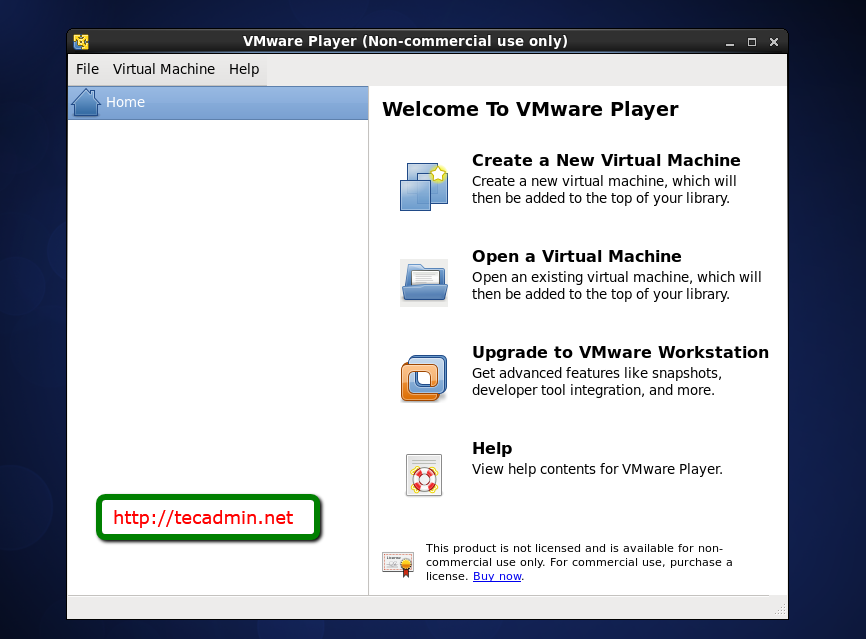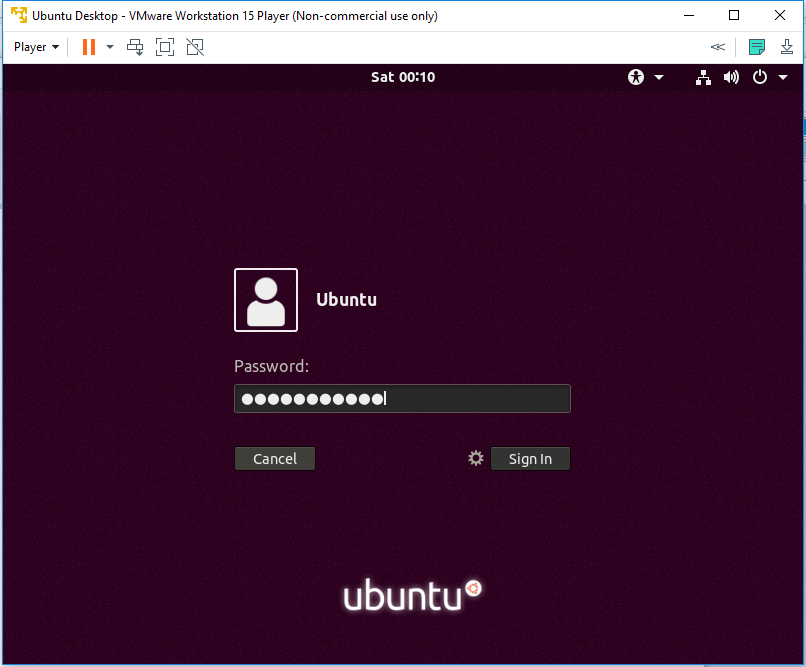

- #Vmware player for ubuntu license key#
- #Vmware player for ubuntu install#
- #Vmware player for ubuntu update#
The steps to remove VMware are a bit unique. Then, you can start using whichever OS you set up.
#Vmware player for ubuntu install#
#Vmware player for ubuntu update#
Install Required Packages Open your terminal either by using the Ctrl+Alt+T keyboard shortcut or by clicking on the terminal icon and install the build dependencies by typing: sudo apt update sudo apt install build-essential linux-headers-generic 2. Configure the preferences like username, password, VM location, disk size, etc. Perform the following steps to install VMware Workstation Player on Ubuntu 18.04: 1.You can choose a physical disk (e.g., DVD drive), ISO image, or create the VM with a blank disk and install the OS later.

To get started, click on Create a New Virtual Machine.
#Vmware player for ubuntu license key#
After these are configured, either enter a license key or choose to use VMware Player for non-commercial use. You’ll be asked to accept the end-user license agreements and configure preferences related to updates and CEIP. Launch VMware Player from the applications menu to begin the installation. Then, go to the Downloads directory and extract the installer like so cd ~/Downloads sudo bash VMware-Player-Full-17.0.2-21581411.x86_64.bundle Set Up VMware Workstation sudo apt install gcc build-essential Download VMware BundleĪssuming all the requirements are met, you can go ahead and download the VMware bundle. The free VMware Workstation Player lets you evaluate multiple operating systems at the same time on your PC. (AMD-V, SVM, Intel VT-x, VT-d, etc.) Then, press the key shown on the screen to save the changes and exit (usually F10).Īfter booting, run the following command in the terminal to install the required dependencies. Download VMware Workstation Player for free.

In the Advanced or CPU tabs, enable the Virtualization option. Select the Firmware Settings option there. If your machine boots too fast for this, you can hold Shift (legacy BIOS) or press Esc a few times (UEFI) when booting to access the GRUB menu. Press the BIOS Setup key shown on the screen when booting. Most modern systems will easily meet VMware Workstation’s hardware requirements but you may want to check out the host OS compatibility table if you’re using an old Ubuntu or Workstation version.Īside from these factors, you’ll also want to ensure hardware virtualization is enabled from your firmware settings. We’ll cover how you can install and get started with Workstation Player in this article. The VMware package also includes VMware Player which is a free product that allows to create virtual machines, but the VMware Player lacks the advanced features. It’s a type-2 hypervisor that’s available in Pro (licensed) and Player (free for non-commercial use) versions. VMware Workstation is one of the best cross-platform options for this purpose. If you need Windows on your system but don’t want to dual boot, or there’s some distro you want to try out, desktop virtualization solutions are your best bet.


 0 kommentar(er)
0 kommentar(er)
